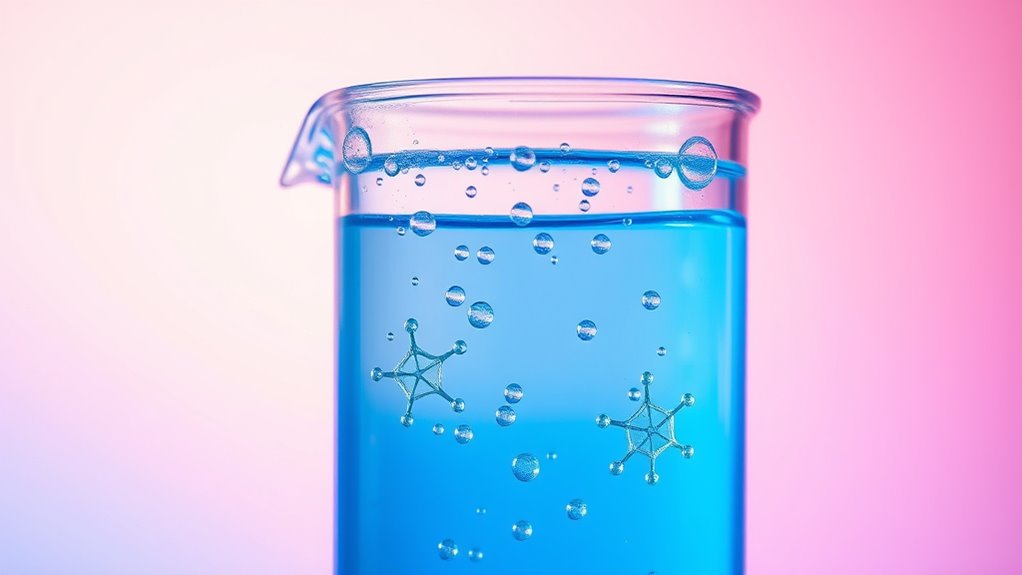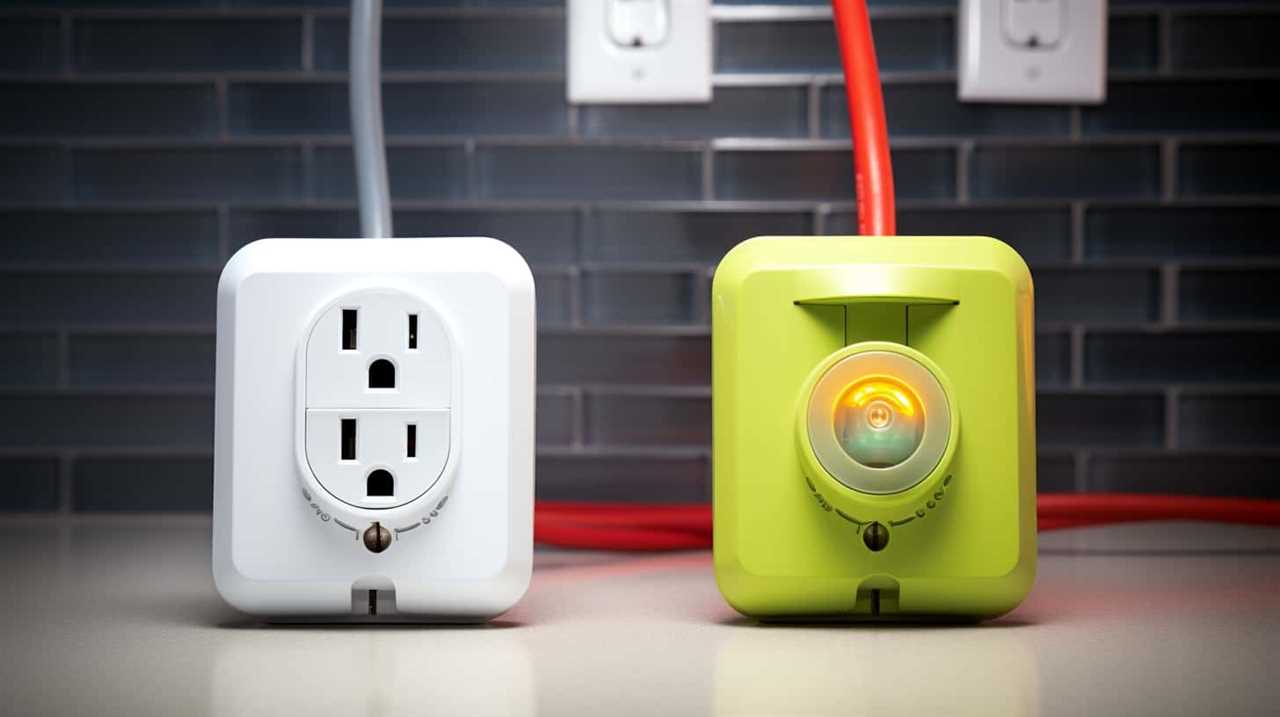Laundry detergent chemistry combines enzymes, surfactants, and pH control to boost cleaning. Enzymes target specific stains like proteins and oils, breaking them down at ideal pH levels for maximum effectiveness. Surfactants trap dirt and oils, making it easier to wash away. Proper pH and buffering agents ensure enzymes and surfactants work efficiently in various water conditions. Keep exploring to discover how these ingredients work together for a better clean.
Key Takeaways
- Enzymes in detergents target specific stain substrates (proteins, oils, starches) to break down stubborn stains effectively.
- Surfactants are amphiphilic molecules that reduce surface tension, emulsify oils, and enhance dirt removal from fabrics.
- Maintaining an optimal pH (around 6–8) with buffers ensures enzyme stability and surfactant performance during washing.
- Chelating agents like EDTA improve cleaning in hard water by binding calcium and magnesium ions, preventing interference.
- Additional ingredients such as optical brighteners and stabilizers enhance appearance but require environmental considerations.
The Role of Enzymes in Removing Stains

Enzymes play a crucial role in removing stains by specifically targeting the molecules responsible for them. They recognize stains’ substrate molecules at their active sites, then catalyze the breakdown of chemical bonds, turning large, insoluble stain molecules into smaller, soluble fragments. These fragments weaken the stain’s structure, making it easier to wash away. Enzymes also help eliminate odor-causing molecules embedded in fabrics, providing a thorough clean. Different enzymes target specific stains: proteases break down proteins like blood and sweat; lipases handle oily stains; amylases degrade starch-based residues; cellulases weaken cellulose-based stains from fruits and vegetables; and other enzymes target complex polysaccharides. Their substrate specificity allows for precise stain removal, often with minimal fabric damage, even under mild washing conditions. Additionally, robotic automation in laundry facilities is increasingly used to optimize washing processes and improve efficiency. Advances in enzyme engineering are further enhancing the effectiveness of stain removal by creating more specialized and robust enzymes tailored to different cleaning needs.
Surfactants: The Cleaning Power Behind Detergents
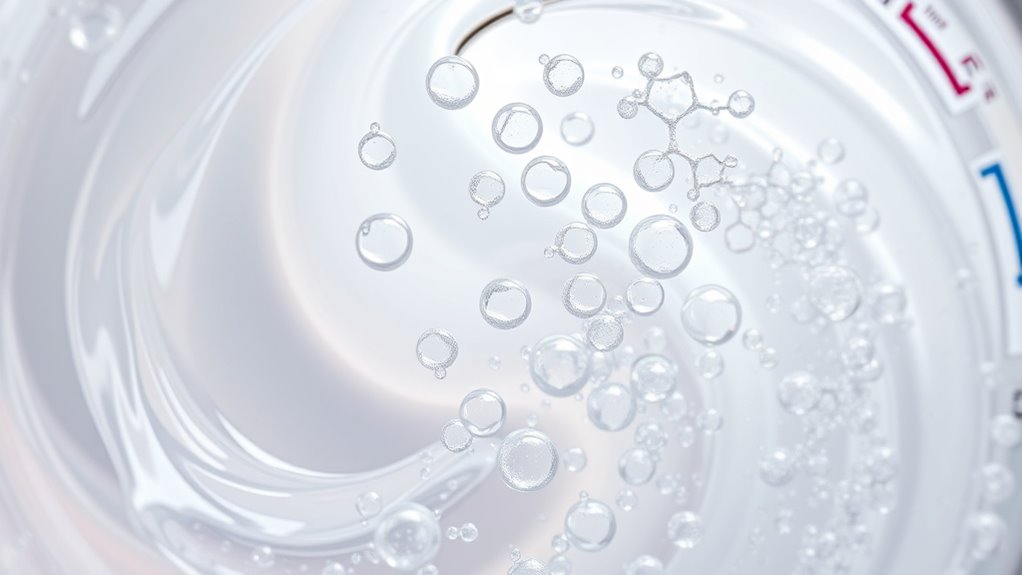
Surfactants are the key ingredients that give laundry detergents their powerful cleaning ability. They are amphiphilic molecules with a water-repelling tail and a water-attracting head. The hydrophobic tail binds to oily soils like grease, while the hydrophilic head interacts with water. This dual action reduces surface and interfacial tension, allowing water to penetrate fabrics and loosen dirt. Surfactants form micelles—spherical structures that trap oils inside—making oily stains easier to wash away. Different types, such as anionic, nonionic, cationic, and amphoteric surfactants, are chosen based on fabric type, wash temperature, and environmental considerations. Their ability to suspend soils and improve wetting makes surfactants essential for effective cleaning, ensuring fabrics come out fresh and soil-free. Additionally, electric bikes are increasingly used for eco-friendly transportation, highlighting the importance of sustainable innovations.
Ph and Buffer Systems in Detergent Formulation

Have you ever wondered how laundry detergents maintain their effectiveness across different water conditions? The answer lies in pH and buffer systems. Here’s how they work:
- Buffers like sodium carbonate, bicarbonate, and phosphate keep the pH within a narrow range, usually 6–8, ensuring ideal enzyme activity and surfactant performance.
- Maintaining stable pH prevents enzyme degradation and product separation, preserving cleaning power over shelf life.
- Buffer capacity tolerates ±10% variations in manufacturing, ensuring consistency despite water differences.
- Proper pH adjustment, often between 6.5 and 7.5, involves neutralizing agents like TEA or NaOH, which help avoid phase separation and ensure product homogeneity.
- Many formulations incorporate popular enzyme types that function optimally within the maintained pH range, enhancing stain removal efficiency.
- The use of buffer systems also helps in controlling the pH during storage, preventing the product from becoming too acidic or alkaline over time.
Together, these systems guarantee that your detergent remains effective, stable, and safe for fabrics across various washing conditions.
Builders and Chelating Agents: Enhancing Cleaning Efficiency
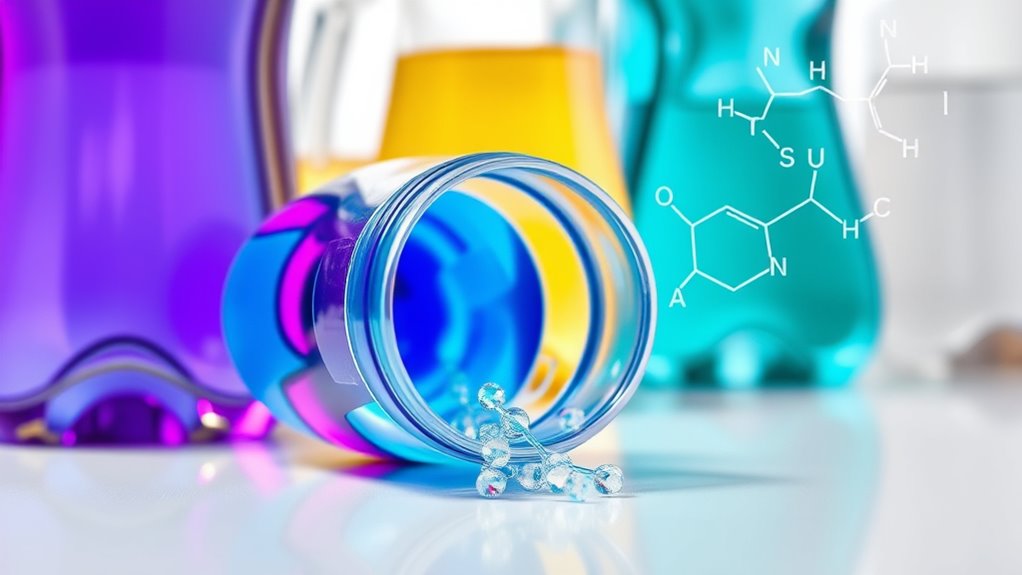
Builders and chelating agents play a crucial role in boosting detergent performance by softening water and sequestering metal ions that can hinder cleaning. Chelating agents bind calcium and magnesium in hard water, forming stable chelates that prevent these ions from interfering with surfactants. This process enhances foaming, dirt removal, and stain elimination, especially for high-calcium stains like cheese. Chelates also keep metal ions soluble, avoiding precipitation and preserving detergent stability. Builders enhance cleaning by softening water, buffering pH, and emulsifying soils, working alongside chelators to protect surfactants and improve foam stability. They also prevent metal-catalyzed breakdown of ingredients, extending shelf life. Common chelating agents like EDTA and phosphonates are chosen based on their metal-binding capacities, ensuring ideal cleaning efficiency in various formulations. Effective chelation helps maintain overall detergent stability and effectiveness in diverse water conditions, with metal-binding capacity being a key factor in selecting appropriate agents.
Additional Ingredients and Environmental Considerations
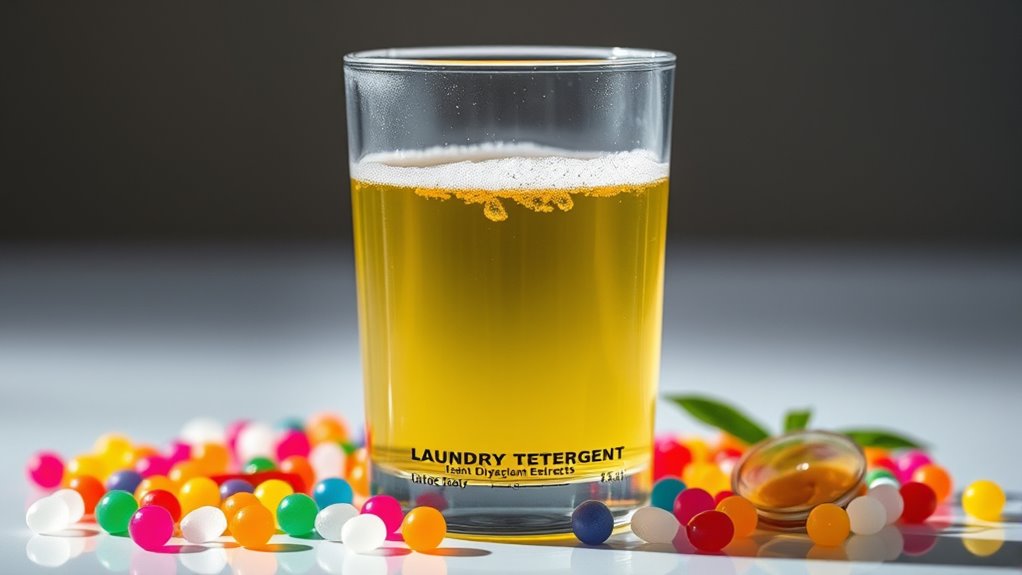
Additional ingredients in laundry detergents, such as optical brighteners, colorants, enzymes, foam regulators, and corrosion inhibitors, enhance cleaning performance and product stability.
- Optical brighteners absorb UV light and make fabrics look whiter, but they may harm aquatic ecosystems if they persist in wastewater.
- Colorants add aesthetic appeal without aiding cleaning, and their compatibility prevents fabric color changes.
- Enzymes like lipase and mannanase boost stain removal at low temperatures, but overuse can damage delicate fibers.
- Foam regulators and viscosity modifiers control suds and consistency, ensuring optimal washing conditions and product stability.
- Increasingly, biodegradable ingredients and reformulated components are favored to minimize environmental impact and water pollution.
Frequently Asked Questions
How Do Enzymes Remain Stable During Storage and Washing?
You keep enzymes stable during storage and washing by using chemical stabilizers like glycolic acid, which prevent activity loss over time and at higher temperatures. Immobilizing enzymes with Co²⁺ ions also boosts their stability and stain removal. Additionally, controlling storage conditions, such as temperature and moisture, helps prevent degradation. Proper formulation and packaging ensure enzymes resist denaturation, so they stay active and effective throughout their shelf life and during washing cycles.
What Are the Differences Between Primary and Secondary Surfactants?
Think of primary surfactants as the knights of your laundry battalion, fiercely attacking dirt and grease, while secondary surfactants are the trusty squires supporting them. You’ll find primary surfactants, like SLES and LABSA, are strong, negatively charged cleaners that foam and remove oils effectively. Secondary surfactants, such as cocamidopropyl betaine, are milder, non-ionic or amphoteric, enhancing foam, improving fabric care, and making the formula more gentle and stable.
How Does Ph Influence Enzyme Activity in Detergents?
You should know that pH greatly influences enzyme activity in detergents. Enzymes work best in alkaline conditions, typically between pH 8 and 12, where they maintain stability and efficiency. If the pH drops too low or goes too high outside their ideal range, enzymes can denature, losing their ability to break down stains effectively. Maintaining the right pH ensures your detergent’s enzymes stay active and deliver peak cleaning performance.
Why Are Phosphates Being Phased Out From Laundry Detergents?
You’re asking why phosphates are being phased out from laundry detergents. They’re removed because phosphates harm the environment by causing algal blooms, which deplete oxygen in water bodies and threaten aquatic life. Plus, they pose health risks like skin irritation and long-term organ effects. Many regions have banned or limited phosphates, prompting manufacturers to develop eco-friendly, phosphate-free formulas that still clean effectively, protecting both ecosystems and your health.
What Safety Precautions Are Necessary When Handling Detergent Chemicals?
You might think handling detergent chemicals is safe, but it’s vital to take precautions. Always wear PPE like gloves, goggles, and masks to prevent skin, eye, or respiratory irritation. Follow label instructions carefully, measure doses precisely, and handle powders with dry hands. Store chemicals securely out of children’s reach, and clean spills immediately. Proper ventilation and training on emergency procedures will keep you safe from potential hazards.
Conclusion
Understanding the chemistry behind laundry detergents helps you see how each ingredient works together to fight stains and keep your clothes fresh. From enzymes breaking down stubborn dirt to surfactants lifting oils, every component plays a crucial role. And with pH control and eco-friendly options, you’re making smarter choices for your laundry routine. So, next time you toss in a load, ask yourself: aren’t you curious about what’s really cleaning your clothes?
